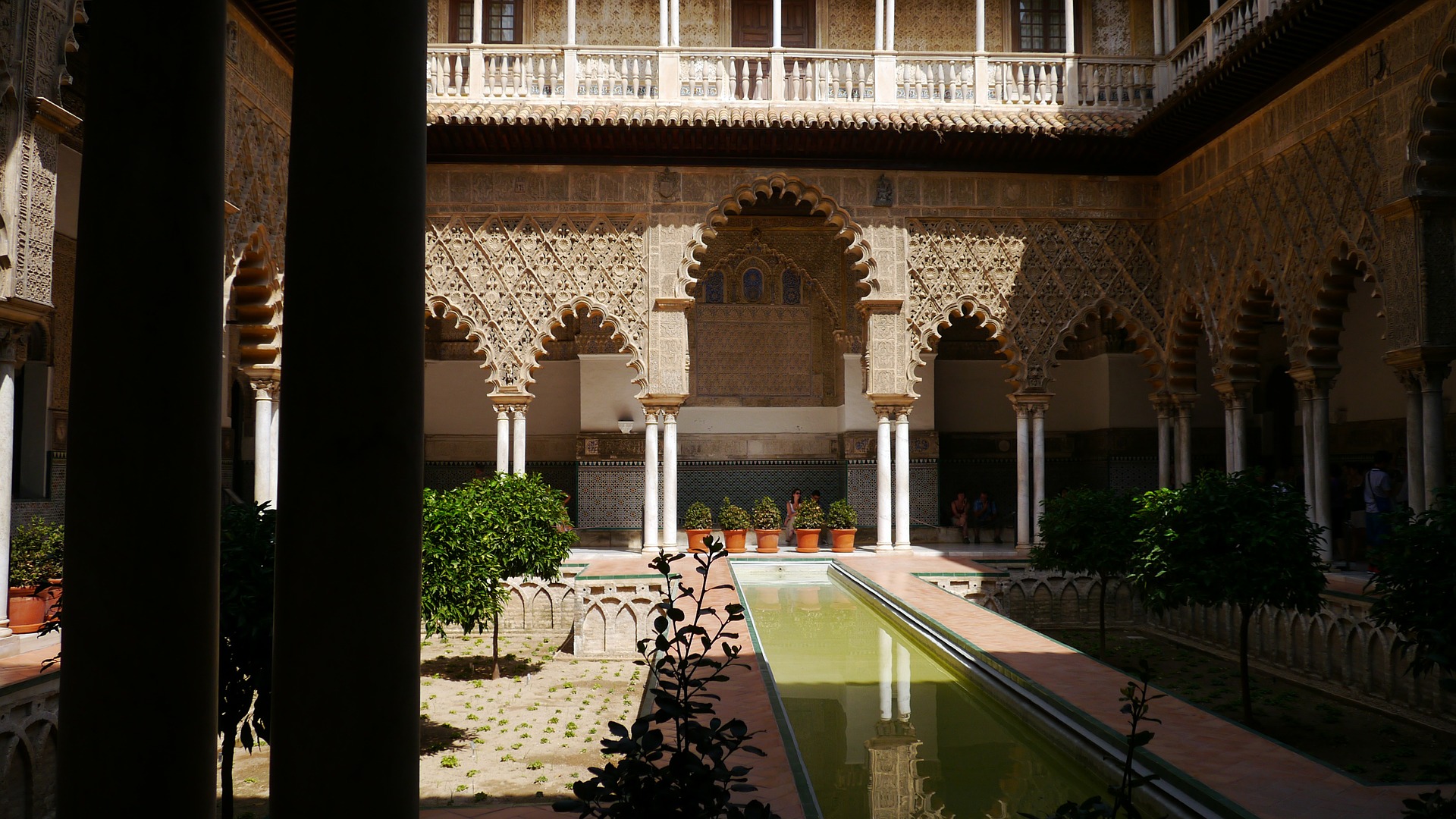The Real Alcazar of Sevilla is a walled palace complex built in different historical stages.
The original palace was built in the High Middle Ages. Some vestiges of Islamic art are preserved and, from the period after the Castilian conquest, a Mudejar palatial space and another in the Gothic style. In later reforms, Renaissance, Mannerist1 and Baroque elements were added.
It is the residence of the members of the Spanish royal family when they visit Seville.
This makes it the oldest royal palace in use in Europe.
Unesco declared it a World Heritage Site, along with the Seville Cathedral and the Archivo de Indias, in 1987.
In 2019 it received 2,067,016 visitors, making it one of the most visited monuments in Spain.
Throughout history, the Alcazar has been the scene of various events related to the Spanish Crown. Between 1363 and 1365, as the seat of the Castilian court, it was visited by the diplomats of the Granada court Ibn Jaldun, philosopher, and Ibn al-Jatib, chronicler and poet, to sign a peace treaty with King Pedro.
In 1367 the Prince of Wales sent the English diplomats Neil Loring, Richard Punchardoun and Thomas Balastre to this Alcazar to meet Don Pedro and collect payments.
On July 28, 1477 the Catholic Monarchs arrived in Sevilla, using the enclosure as a room after ten years without a king set foot in the city. Queen Isabel I of Castile, observing the poor condition of the building, ordered interventions and measures for the material and functional recovery of the site.
A year later, on June 30, 1478, his second son, Prince John, was born in the palace.
It is known that this royal birth was assisted by a Sevillian midwife known as «la Herradera» and that it was attended, as witnesses appointed by King Fernando, of Garci Téllez, Alonso Melgarejo, Fernando de Abrejo and Juan de Pineda, as marked Castilian norms, to dispel the slightest doubt that the son was the queen’s.
In 1526 the wedding of Carlos I with his cousin Isabel of Portugal was celebrated in the Alcázar.
Between 1729 and 1733 the Court was established in the Alcazar of Sevilla. Felipe V, Isabel de Farnesio and the future Carlos III lived there.
In 1823, on the occasion of the military intervention of the Hundred Thousand Sons of San Luis, the royal family, headed by Fernando VII, resided in Seville for two months, during which the Alcázar served as their royal residence.
Coinciding with this royal stay, on April 17, 1823, the Infante Enrique de Borbón y Borbón-Dos Sicilias was born in the city, son of the Infante Francisco de Paula de Borbón and Luisa Carlota de Borbón-Dos Sicilias, and to whom the king Fernando VII granted him, a few days after his birth, the title of Duke of Seville.
By decree of April 22, 1931, the Government of the Second Spanish Republic, at the proposal of its Minister of Finance, Indalecio Prieto, ceded the Alcazar and its gardens to the municipality of Sevilla.
On April 2, 1976, during the Spanish Transition, a meeting of the Council of Ministers took place here, chaired by Juan Carlos I.
The Council of Ministers met again in the Alcazar on March 19, 2010, this time without the presence of the monarch.
The last event related to the monarchy was on March 18, 1995, when a lunch and reception was held on the occasion of the wedding of the Infanta Elena de Borbón, daughter of King Juan Carlos I, with Jaime de Marichalar.


Leave A Comment